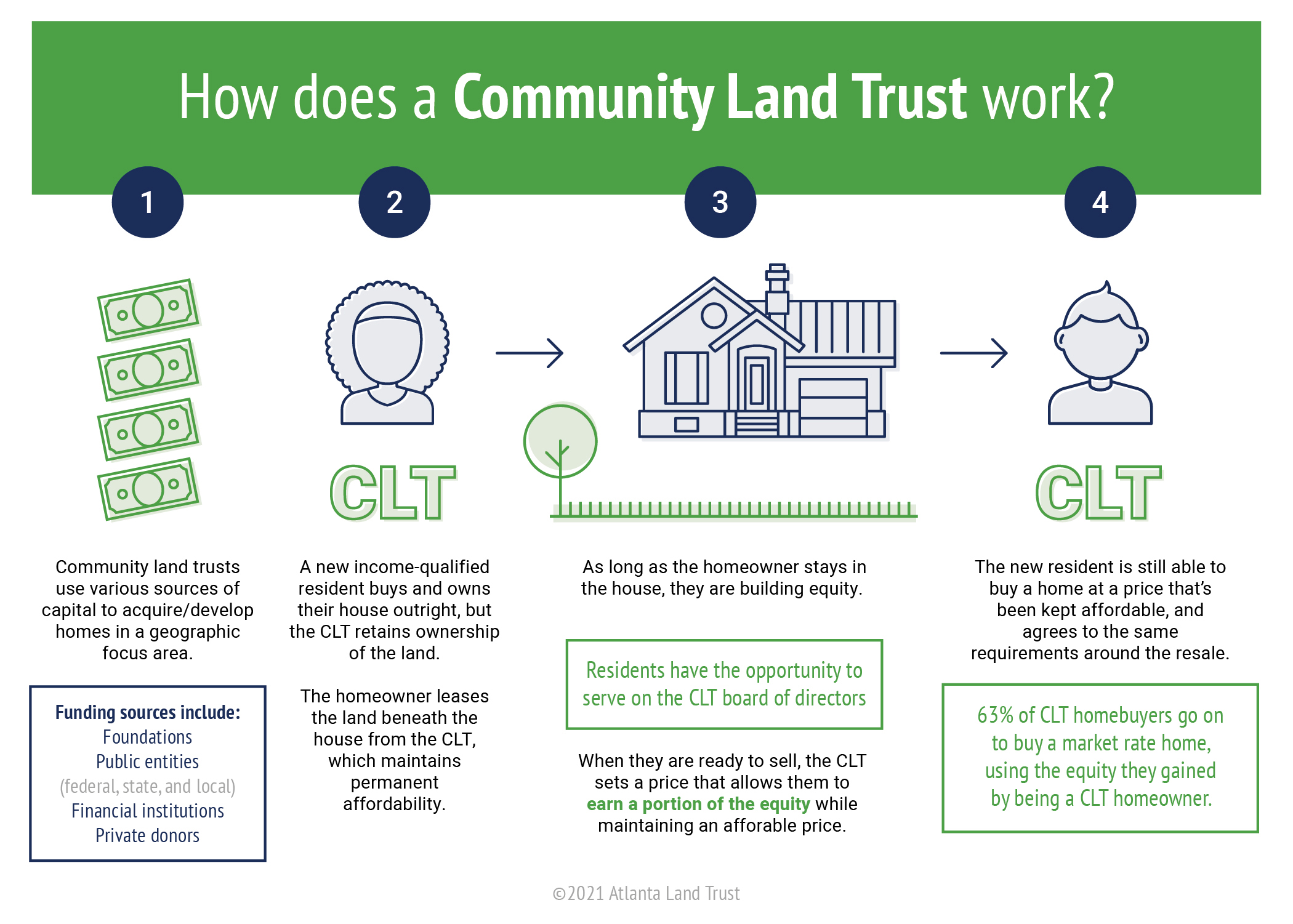Housing in the Wheeling area can be affordable for everyone.
Problems Wheeling is facing:
- Homelessness
- Increasing rents
- Abandoned buildings
A community land trust can help with these problems.
What is a community land trust?
A community land trust or CLT is a non-profit that obtains land and acts as a steward of that land long-term in the interests of a community. The CLT members create policies about how their land can be used. Typically, CLTs use the land for affordable housing.

Image from Atlanta Land Trust
How it could work in Wheeling:
- The CLT buys or is donated a dilapidated building.
- The CLT works with an interested resident and relevant experts to make a plan for the building.
- The resident buys the building from the CLT while the CLT retains ownership of the land.
- The resident makes monthly lease payments to the CLT and builds equity.
- The resident eventually sells their home to a new resident with the oversight of the CLT.
The membership and board will have three parts to represent different members of the community:
- CLT Residents
- General public
- Experts and elected officials
If you’re interested in becoming a member or helping in any other way, please fill out the form below.
More resources about CLTs
- Community Land Trusts 101 presentation video (30 mins) from the Metropolitan Council in St Paul, Minnesota
- Short explainer video from the Community Land Trust Network (UK)
- Grounded Solutions Community Land Trust Technical Manual - Grounded Solutions has many other resources as well.
- Community Land Trusts as Part of a Just Transition from ReImagine Appalachia
FAQs
Is this the same as a “land bank”?
No, a land bank is typically public entity run by a city or county that gives the government more power to manage land and hold land for future development.
Community land trusts are a form of nonprofit organization that stewards land and provides opportunity for home ownership to low-income people.
Land banks and community land trusts can work together but they aren’t the same.
Where would the money come from?
The community land trust would need income from multiple sources to be sustainable.
A couple sources of revenue are built into the CLT model:
- Lease payments - The CLT leases their land to residents, and some maintenance costs can be incorporated into this fee.
- Membership - CLTs are typically membership organizations, so they can charge dues to members.
In addition, a core part of a CLT is selling buildings to residents. An old building can be donated to the CLT, then the CLT members can invest sweat equity into fixing up the building. By selling the improved building to a resident, the CLT generates revenue that can be used for future projects.
The CLT also doesn’t have to sell all of its buildings to low-income residents. If a donated building can be fixed up and sold to a middle-income resident, that revenue can subsidize projects for lower-income residents.
All this means that the CLT can generate revenue from:
- Unskilled volunteer labor
- Skilled volunteer labor
- Donated or discounted building supplies
Money can come from federal, state, and local grants, as well as loans. Some specialized loan funds offer “patient money” with low rates to programs like community land trusts.
The value of donated items, land, and labor of can often also be considered match funds when applying for grants.